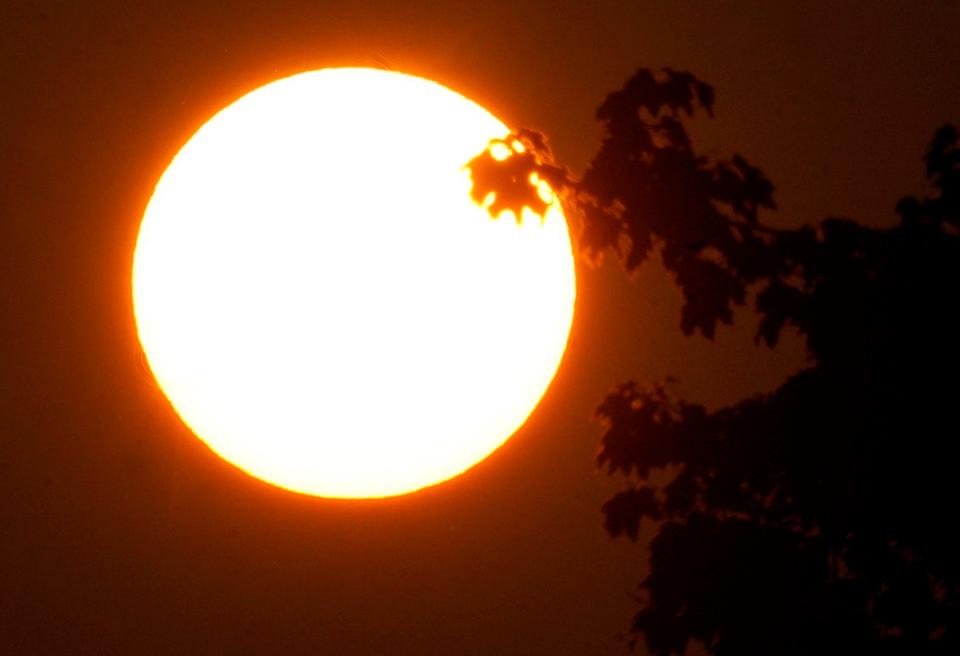Milwaukee has some of the worst air quality in the nation, a new study says. Here's why
The Milwaukee metro area has some of the worst ozone polluted air in the nation, according to a new report.
The American Lung Association looked at air quality across the U.S. in its latest "State of the Air" report analyzing data from 2020 through 2022.
Across the country, more than 131 million people live in areas with heighten levels of ozone or particle pollution. Nearly 4 in 10 people live in an area that received a failing grade for at least one measure of air pollution, according to the report.
People of color are also disproportionately exposed to unhealthy air and are more likely to live with chronic conditions that make them vulnerable to pollution, such as asthma, diabetes and heart disease.
Climate change is a factor that leads to increased levels of ground-level ozone and particle pollution, according to the report. Smoke from active wildfires can also make the air unsafe to breathe.
RELATED: A new map shows how vulnerable neighborhoods are to climate change. Here’s how Wisconsin fares
Milwaukee metro area ranks 26th worst in the nation for ozone pollution
The Milwaukee metro area ranked 26th worst in the nation for ozone pollution, according to the report.
Rankings were based on the area's worst county's average number of unhealthy air quality days.
In the Milwaukee metro area, Racine County had an average of 6.7 unhealthy air quality days per year between 2020 and 2022.
In addition to the Milwaukee metro area, Door, Kenosha, Manitowoc, Ozaukee, and Sheboygan counties all received failing grades for ozone pollution.
The report also assessed the spike in particle pollution.
The Milwaukee metro area in 2024 climbed 13 spots to claim the 105th worst in the nation for short-term particle pollution. Milwaukee County averaged 7 days per year of unhealthy air quality.
What is ozone pollution? What is particle pollution?

Ground-level ozone, also called "smog," forms when gases from cars, smokestacks and other sources combine with sunlight and heat.
Wisconsinites are most at risk of ozone pollution during summer because sunlight and hot temps are needed to create ozone.
Ozone also can be carried by wind. That means it's not just a local problem, but can impact the whole region.
Particle pollution, also known as PM2.5, refers to the tiny bits of solids and liquids in the air from factories, power plants, vehicles and wildfires.
Both ozone and particle pollution can cause premature death and serious health complications like asthma, heart attacks, strokes, preterm births and impaired cognitive functioning later in life.
What areas of Wisconsin are most impacted by unhealthy ozone levels?
The most at risk counties for unhealthy ozone levels include counties in southeastern Wisconsin along Lake Michigan, from Kenosha County to Door County, according to the Wisconsin Department of Health Services.
Top 5 cities with worst ozone pollution:
Los Angeles-Long Beach, CA
Visalia, CA
Bakersfield, CA
Fresno-Madera-Hanford, CA
Phoenix-Mesa, AZ
Top 5 cities with worst year-round particle pollution:
Bakersfield, CA
Visalia, CA
Fresno-Madera-Hanford, CA
Eugene-Springfield, OR
San Jose-San Francisco-Oakland, CA
Cleanest air quality in U.S. Cities (in alphabetical order)
Bangor, ME
Johnson, City-Kingsport-Bristol, TN-VA
Lincoln-Beatrice, NE
Urban Honolulu, HI
Wilmington, NC
How can I protect my health when air quality is bad?
The Wisconsin Department of Health Services recommends the following tips for you and your family to minimize the risk of outdoor air pollution:
Limit time outdoors and keep windows closed when the air quality is poor. You can call 211 to find an air conditioned space near you if your home is too hot.
If you have asthma, make sure to take medications as prescribed and always have your quick relief inhaler and spacer with you. Make sure your school or daycare has your child's asthma plan on file and any needed medications.
Consider wearing a N95 mask on days where particle pollution levels are elevated. No masks can filter out ozone, so stay inside on high ozone days as if possible.
You can use an indoor air cleaner or filter if there are consecutive days of poor air quality.
You can sign up for DNR air quality advisories and check air quality forecasts at airnow.gov.
For more information, you can visit the Wisconsin Department of Health Services website here.
Track air quality in Wisconsin and the United States with this map:
Tips to stay safe: Air quality is bad in Wisconsin, here are ways to protect yourself and loved ones
This article originally appeared on Milwaukee Journal Sentinel: Milwaukee is among worst in U.S. for ozone pollution, 2024 study says

